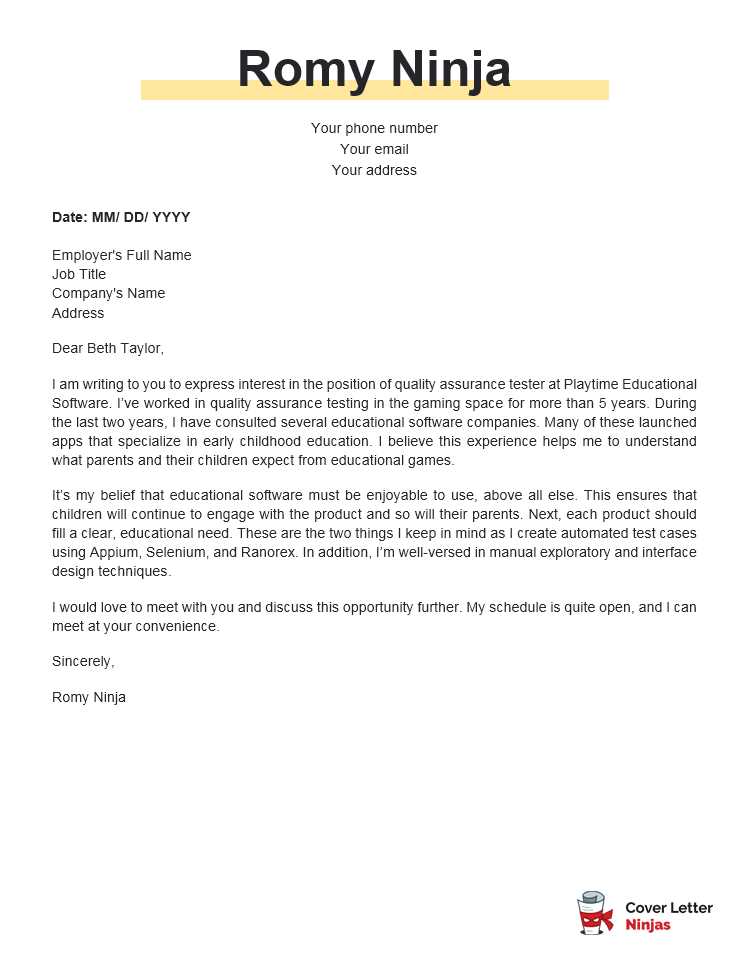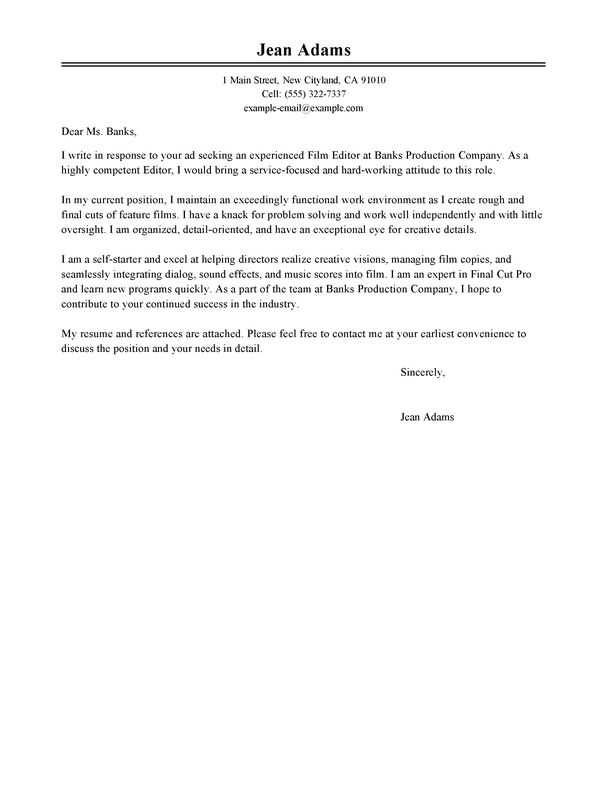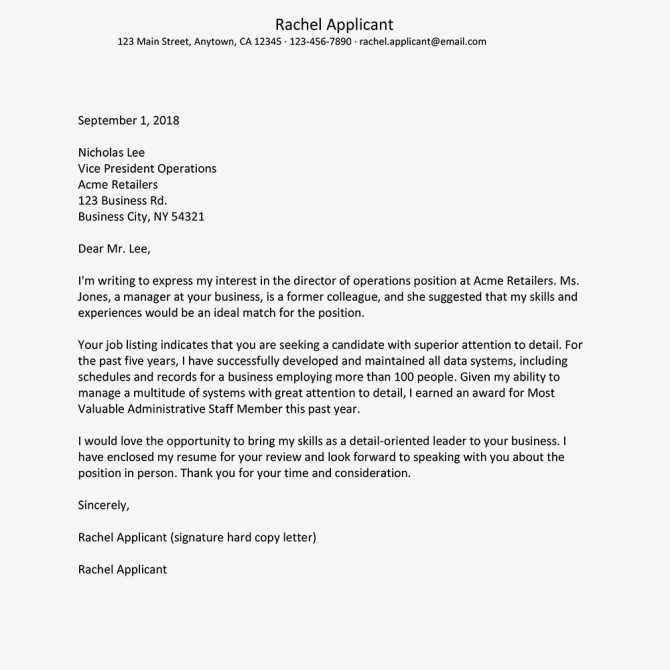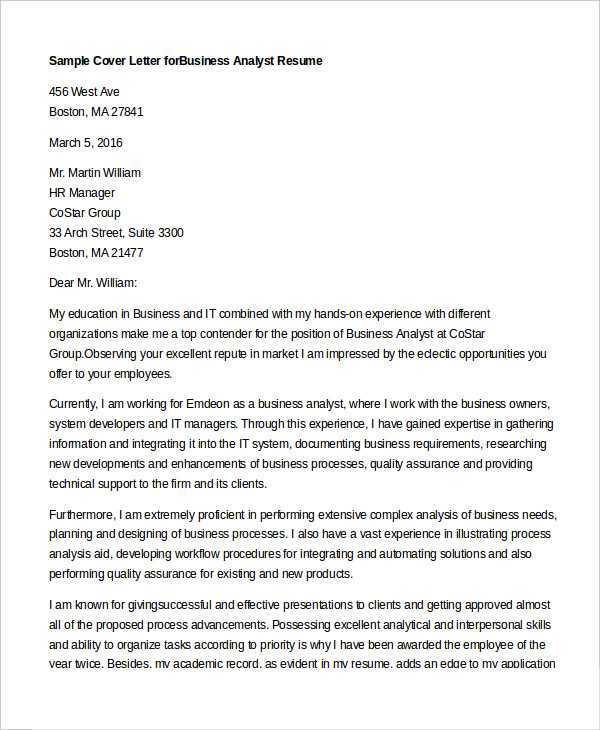Quality Assurance Cover Letter Template for Job Seekers

When applying for a position in the testing and quality field, it’s essential to present yourself as a detail-oriented and reliable candidate. A well-crafted introductory document can make a significant impact, giving potential employers a glimpse into your qualifications and professional experience.
In this guide, we’ll walk you through how to structure your document to highlight your key skills, experiences, and passion for ensuring product excellence. Whether you’re new to the industry or have years of experience, tailoring this document effectively can increase your chances of standing out in a competitive job market.
Emphasizing your strengths in an organized, concise format can not only show your expertise but also your ability to communicate clearly. Properly formatting this document is just as important as the content itself, as it allows recruiters to quickly see your suitability for the role.
Essential Elements of a QA Cover Letter

Creating an impactful document to support your job application requires more than just listing your experience. It should highlight the skills and qualities that make you an ideal fit for the role. Here are the key components to include for a strong application:
- Introduction: Start with a brief opening that clearly states the position you’re applying for and why you’re interested in it.
- Relevant Skills: Focus on your technical and analytical abilities, particularly those that align with the job requirements. Highlight experience in testing, debugging, or improving processes.
- Experience and Achievements: Provide examples of past projects or roles where you successfully contributed to improving product standards or identifying issues. Emphasize measurable results.
- Knowledge of Industry Standards: Show your familiarity with the best practices, tools, and frameworks commonly used in the field.
- Conclusion: Reaffirm your enthusiasm for the role and briefly explain how your skills would add value to the company.
- Professional Tone: Maintain a formal yet approachable tone throughout, ensuring your communication is clear and precise.
By including these essential elements, you will present a compelling case for why you’re the best candidate for the job, making it easier for hiring managers to see your potential. Ensure that each section is customized to the specific position to demonstrate genuine interest and attention to detail.
How to Showcase Your QA Skills Effectively
Demonstrating your expertise in the testing field is crucial when applying for a role in this industry. It’s important to focus on specific abilities that highlight your proficiency in ensuring that products meet high standards. Here are some tips on how to effectively showcase your technical skills and problem-solving abilities:
- Focus on Relevant Tools: Mention your experience with popular testing tools and software, such as Selenium, JIRA, or TestRail. Highlight your ability to use these tools efficiently and how they’ve contributed to successful project outcomes.
- Detail Specific Projects: Share examples of past work where your input directly improved a product or solved an issue. This shows that you not only understand the processes but can also apply your knowledge in practical settings.
- Highlight Analytical Skills: Explain your approach to identifying bugs, evaluating user feedback, and suggesting improvements. Demonstrating your ability to think critically and logically is key.
- Communication and Collaboration: Showcase your ability to collaborate with development teams and explain complex issues to non-technical stakeholders. Clear communication is a vital skill in this field.
- Problem-Solving Examples: Provide examples of how you’ve identified problems early in the process and contributed to solving them before they affected the final product.
By emphasizing these key aspects, you can paint a clear picture of your qualifications and show employers that you have the practical knowledge and experience they’re looking for in a candidate. Tailoring these examples to the specific role you’re applying for will further highlight your fit for the job.
Customizing Your Cover Letter for Each Job

Tailoring your application document to match the specific requirements of each position can make a significant difference in your chances of standing out. By aligning your skills, experiences, and achievements with the job description, you demonstrate genuine interest and a deeper understanding of the company’s needs. This approach increases the likelihood that your application will catch the attention of hiring managers.
Research the Company and Role
Before you start writing, take the time to understand the company’s mission, values, and the specific responsibilities of the role. Research the industry and any challenges the company may be facing. Incorporate this information to show that you’ve put thought into how you can contribute to their success. Address the company’s needs directly by highlighting how your expertise aligns with their goals.
Highlight the Most Relevant Skills and Experience
Each job has its unique set of requirements, and it’s important to emphasize the skills that are most relevant for the position. Rather than using a one-size-fits-all approach, focus on the specific abilities that will help you succeed in that particular role. For instance, if the job emphasizes technical expertise, prioritize mentioning your proficiency with tools, software, and methodologies that are specifically mentioned in the job listing.
By personalizing your document, you make it clear that you are not just looking for any job, but are committed to contributing to the success of that specific organization. This personalized touch can help you stand out from other candidates who submit generic applications.
Avoiding Common Mistakes in QA Letters

When applying for a role in the testing field, presenting yourself professionally is key. Many applicants fall into common pitfalls that can detract from an otherwise strong application. Avoiding these mistakes can help ensure your submission stands out for the right reasons, showcasing your skills effectively and making a positive impression on hiring managers.
- Generic Content: Using a one-size-fits-all approach often results in an application that feels impersonal. Tailor your content to each specific role to demonstrate your genuine interest in the position and the company.
- Lack of Focus: Straying off-topic or including irrelevant details can confuse or frustrate the reader. Stick to the skills and experiences most relevant to the job, ensuring that each point you make supports your candidacy.
- Overuse of Buzzwords: While it’s important to include industry-specific terminology, overloading your application with jargon can make it sound robotic and impersonal. Focus on providing clear examples of how you’ve used those terms in real-world scenarios.
- Neglecting to Proofread: Spelling and grammar errors can undermine your professionalism and attention to detail. Always proofread your document to ensure it is free from mistakes that could detract from the quality of your application.
- Failure to Showcase Soft Skills: While technical proficiency is critical, hiring managers also look for candidates who can collaborate, communicate clearly, and solve problems. Be sure to highlight these soft skills, as they are just as important in the workplace.
By avoiding these common mistakes, you can create a compelling, well-polished application that presents you as a detail-oriented and thoughtful candidate. This careful approach will help you make a lasting impression in the competitive field of testing and development.